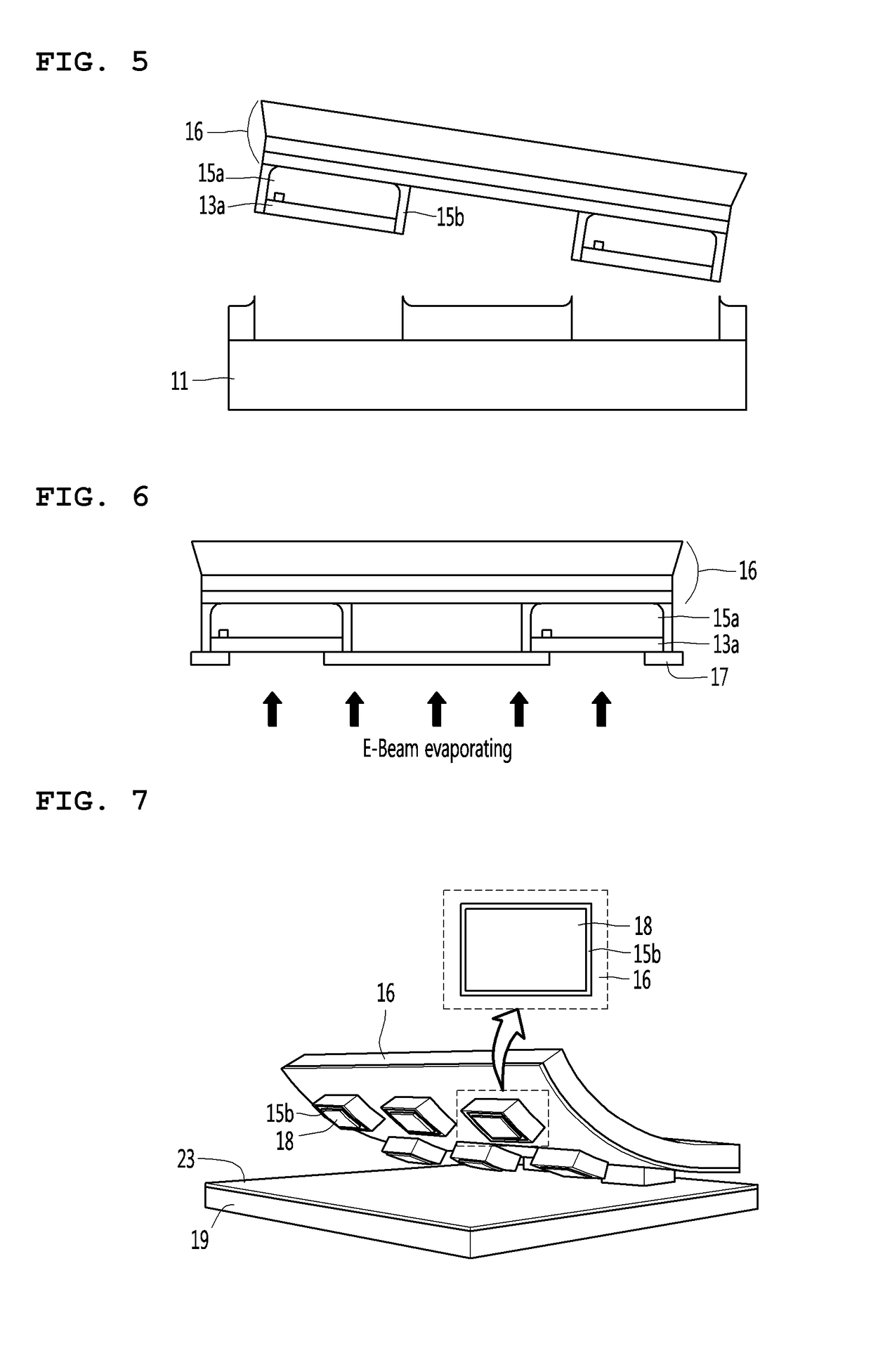Solar cell peparation method
a solar cell and peparation method technology, applied in the direction of sustainable manufacturing/processing, climate sustainability, semiconductor devices, etc., can solve the problems of electricity not being allowed to pass between the upper and lower portions of the solar cell, the technique of separating a compound semiconductor from the substrate in the process of fabricating a solar cell semiconductor device has become an issue, and it is impossible to form an electrode on the bottom surface of the micro device, etc., to achieve the effect of high unit pri
- Summary
- Abstract
- Description
- Claims
- Application Information
AI Technical Summary
Benefits of technology
Problems solved by technology
Method used
Image
Examples
Embodiment Construction
[0027]Although embodiments are described in detail with reference to the accompanying drawings, the present invention is not limited to the embodiments. Moreover, detailed descriptions related to well-known functions or configurations will be ruled out in order not to unnecessarily obscure subject matters of the present invention.
[0028]FIGS. 1 to 6 are views illustrating a process of preparing a micro device sample to be transferred in a method for fabricating a solar cell according to an embodiment. A process of preparing a micro device sample to be transferred may include a step of preparing a substrate including a sacrificial layer to pattern a solar cell layer and a top electrode on a top surface, a step of patterning the sacrificial layer so that the sacrificial layer has a surface area greater than that of the solar cell layer, a step of applying photoresist to an upper portion of the substrate and performing an undercut process on the sacrificial layer, a step of attaching a ...
PUM
 Login to View More
Login to View More Abstract
Description
Claims
Application Information
 Login to View More
Login to View More - R&D
- Intellectual Property
- Life Sciences
- Materials
- Tech Scout
- Unparalleled Data Quality
- Higher Quality Content
- 60% Fewer Hallucinations
Browse by: Latest US Patents, China's latest patents, Technical Efficacy Thesaurus, Application Domain, Technology Topic, Popular Technical Reports.
© 2025 PatSnap. All rights reserved.Legal|Privacy policy|Modern Slavery Act Transparency Statement|Sitemap|About US| Contact US: help@patsnap.com



